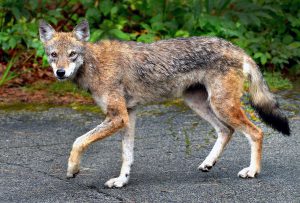Nestled within the rich stories of American folklore lies a chilling tale that has captivated the imaginations of many for generations: Skinwalkers. With its origins deeply rooted in the beliefs and traditions of indigenous peoples, the legend of the Skinwalker continues to intrigue and terrify those who dare to delve into its shadowy depths. In this blog, we will embark on a journey through the mystique of Skinwalkers, exploring their origins, characteristics, and the enduring fascination that surrounds them.
To understand the lore of Skinwalkers, one must first acknowledge its origins in Native American cultures, particularly within the Navajo and Pueblo communities of the American Southwest. Known by different names in various tribal traditions, these malevolent shape-shifters are believed to be powerful witches or shamans who have strayed down a dark and forbidden path. In many indigenous cultures, the act of shape-shifting is considered taboo, as it involves tapping into dark magic and sacrificing one’s humanity for supernatural abilities.
The most distinctive feature of Skinwalkers is their ability to transform into animals at will. While they can assume the forms of various creatures, common choices include coyotes, wolves, and owls. This shape-shifting ability grants them a terrifying advantage, allowing them to blend seamlessly with their surroundings and stalk their prey with uncanny stealth. Moreover, Skinwalkers are believed to possess other supernatural powers, such as mind control, telepathy, and the ability to curse or harm others from a distance.
Encounters with Skinwalkers are rare, and those who claim to have crossed paths with these malevolent beings often recount chilling tales of their experiences. Some describe witnessing an animal that should not be present, exhibiting unnaturally intelligent and predatory behavior. Others speak of eerie encounters with humans who display unnatural agility and a malevolent aura. One common thread in these stories is the feeling of dread and unease that washes over those who encounter Skinwalkers. Native American cultures emphasize that even acknowledging the presence of a Skinwalker can invite their malevolence, making it essential to avoid engaging with or even discussing them whenever possible.
Given the sinister reputation of Skinwalkers, indigenous communities have developed rituals and safeguards to protect themselves from these malevolent entities. Many Navajo and Pueblo traditions include rituals involving the use of sacred herbs, blessings, and protective charms. These practices are meant to deter Skinwalkers and safeguard individuals and communities from their dark influence.
Despite their terrifying reputation, Skinwalkers have captured the imaginations of many beyond indigenous communities. They have become a fixture in modern paranormal and horror lore, featuring prominently in literature, films, and television series. The enigmatic nature of these shape-shifters, their connection to ancient Native American cultures, and the fear they evoke all contribute to their enduring fascination.
The American folklore of Skinwalkers is a haunting and mysterious tale deeply rooted in the traditions and beliefs of indigenous peoples. While they may be the stuff of nightmares, Skinwalkers continue to intrigue and terrify those who delve into their lore. Whether encountered in stories or whispered about in hushed tones, these malevolent shape-shifters remind us of the enduring power of folklore to captivate our imaginations and awaken our deepest fears.
4 thoughts on “Unveiling the Enigma: The American Folklore of Skinwalkers”
Leave a Reply
You must be logged in to post a comment.
As explained to me by a great friend who’s Navajo, even mentioning the name of these creatures invoke them; its much safer to call them flesh pedestrians instead!
such a terrifying creature. awesome.
This was extremely informative, and even though I know what they are I didn’t know the Navajo had any connection to them.
This was such a great post, I love it